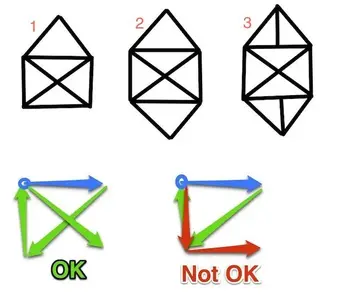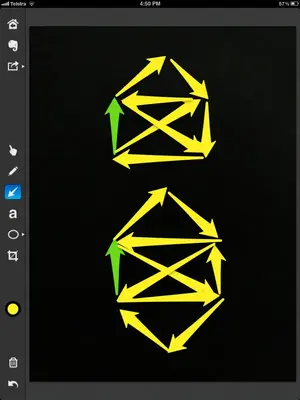You are using an out of date browser. It may not display this or other websites correctly.
You should upgrade or use an alternative browser.
You should upgrade or use an alternative browser.
Brain teasers
- Thread starter Richard Brown
- Start date
55julie55 said:The question is why?.......?...?
Because we can. I think!
Love your kitty!
Sent from my iPad using iPF
TheRambler
iPF Novice
Got it Richard......it's a way of remembering our Regal Houses
No plan like yours to study history wisely.
Normans, Plantagenets, Lancaster, York, Tudor, Stuart, Hanover and Windsor!!!!!!!!!
I CAN FINALLY GO TO SLEEP.....YAYYYYYYYY!!!!
No plan like yours to study history wisely.
Normans, Plantagenets, Lancaster, York, Tudor, Stuart, Hanover and Windsor!!!!!!!!!
I CAN FINALLY GO TO SLEEP.....YAYYYYYYYY!!!!
Richard Brown
iPF Novice
TheRambler said:Got it Richard......it's a way of remembering our Regal Houses
No plan like yours to study history wisely.
Normans, Plantagenets, Lancaster, York, Tudor, Stuart, Hanover and Windsor!!!!!!!!!
I CAN FINALLY GO TO SLEEP.....YAYYYYYYYY!!!!
Yes, you're absolutely right
Sent from my iPad 1 using iPF - Greetings
Last edited:
Richard Brown
iPF Novice
55julie55 said:The question is why?.......?...?
Because it's there.
Sent from my iPad 1 using iPF - Greetings
twerppoet
iPad Fan
Seems selfish to solve puzzles, but not offer one, so:
An mild attack of insomnia led me to consider this common puzzle shown in figure 1. The idea is to draw it with one continuous line. Crossing lines is permitted, but retracing lines is not. If you've never seen it before, go ahead and solve it.
There are actually several solutions, I've worked out at least six; and that does not include mirror images and going backwards. In the process I noticed some interesting relationships, that on further thought made perfect sense. I've made kind of logic/geometry puzzle/quiz; so the sleepless hours were not completely waisted.
All solutions for figure 1 have one thing in common. What is it, and why?
Figure two has even more possible solutions, far too many for me to even bother working out. They also have one thing in common. What is it, and why?
If you've figured out the why answers to figure 1 and 2, then you should have no problem telling me why figure 3 has no solution.
Have fun.
An mild attack of insomnia led me to consider this common puzzle shown in figure 1. The idea is to draw it with one continuous line. Crossing lines is permitted, but retracing lines is not. If you've never seen it before, go ahead and solve it.
There are actually several solutions, I've worked out at least six; and that does not include mirror images and going backwards. In the process I noticed some interesting relationships, that on further thought made perfect sense. I've made kind of logic/geometry puzzle/quiz; so the sleepless hours were not completely waisted.
All solutions for figure 1 have one thing in common. What is it, and why?
Figure two has even more possible solutions, far too many for me to even bother working out. They also have one thing in common. What is it, and why?
If you've figured out the why answers to figure 1 and 2, then you should have no problem telling me why figure 3 has no solution.
Have fun.
Attachments
Last edited:
Richard Brown
iPF Novice
Nice puzzle, Twerpoet. It's a good old one for which I have 2 solutions - worked out some years back. Let's see how quickly these are solved 
Sent from my iPad 1 using iPF - Greetings
Sent from my iPad 1 using iPF - Greetings
twerppoet
iPad Fan
Nice puzzle, Twerpoet. It's a good old one for which I have 2 solutions - worked out some years back. Let's see how quickly these are solved
Sent from my iPad 1 using iPF - Greetings
I think I ran into the first one when I was about 10. I keep revisiting it for some reason, and each time I've come up with a couple more solutions. This time I noticed a bit more, and discovered the key that makes it all much easier (it only took 40 years for me to notice). The second is simply too easy to solve, and its only point is as an illustration for the second question. I'll pretty much guarantee no one is going to come up with a solution for number three: Or I'm going to have to apologize for asking any of the questions, because I'll be wrong about the answers.
twerppoet
iPad Fan
Nope. You'll need multiple solutions for each puzzle, so that you can see what those solutions (for each puzzle) have in common. Then you'll want to think about why. It's easiest if you get the answers in the order asked.
Or if you are real good (I wasn't) you might figure out the answer just by looking at the mechanics (geometry) of a single puzzles' solution.
How did you get the black background in Skitch?
BTW, your arrows for the first puzzle can actually be followed for two correct solutions; though the overlap shows which one you had in mind.
Or if you are real good (I wasn't) you might figure out the answer just by looking at the mechanics (geometry) of a single puzzles' solution.
How did you get the black background in Skitch?
BTW, your arrows for the first puzzle can actually be followed for two correct solutions; though the overlap shows which one you had in mind.
Last edited:
Yes I saw the 2 solutions too, I thought one was enough, so back to the drawing board for me. Just couldn't be simple could it? 
I got the black by just taking a photo with the cover on which is black and using that. Much better than the blank white page at times. Great app though.
Sent from my iPad using iPF
I got the black by just taking a photo with the cover on which is black and using that. Much better than the blank white page at times. Great app though.
Sent from my iPad using iPF
MrLuke
iPF Noob
Ah hah. I know iths trick. I'm doing my A levels at the moment and last year we did something known as decision. It's effectively a module of maths used for working out complex partnerships using algorithms. Google 'kruscals algorithm' and you'll see some of the stuff we learnt. It's not particularly difficult fortunately. On topic though, there's an algorithm that can tell you exactly how many routes are possible and where to start from if I remember correctly. If I get a bit of time tomorrow I'll fish it out and let you know.
Proud owner of a 32GB wifi iPad2 iOS5.
Proud owner of a 32GB wifi iPad2 iOS5.
twerppoet
iPad Fan
Ah hah. I know iths trick. I'm doing my A levels at the moment and last year we did something known as decision. It's effectively a module of maths used for working out complex partnerships using algorithms. Google 'kruscals algorithm' and you'll see some of the stuff we learnt. It's not particularly difficult fortunately. On topic though, there's an algorithm that can tell you exactly how many routes are possible and where to start from if I remember correctly. If I get a bit of time tomorrow I'll fish it out and let you know.
Proud owner of a 32GB wifi iPad2 iOS5.
Cool. I don't know how many solutions there are. I do know I have not found them all. Unfortunately I've never run into the algorithm you mentioned, but I'll be looking at it soon. Logic and geometry are all that's needed to solve the questions. Working out several of the solutions is the brute force method I used to 'notice' the common theme that led to the use of reason.
I'm looking forward to finding out how many of those solutions exist. Before you set up the problem (so you get all possible answers), I'll hint that it is possible to solve puzzle one without crossing any lines.
Richard Brown
iPF Novice
I haven't seen any answers to my milk container experiment. That's a shame its a great practical exercise which would work VERY well in schools. So, I'm reposting it.
Let's hope there are some takers. If you are worried about safety, it's not dangerous, but try using hot tap water first.


Sent from my iPad 1 using iPF - Greetings
Try this experiment: -
Take an empty plastic 4 pint (2.27L) milk container. This size is best because it has a good handle, and can be held safely.
Part fill it with hot tap water. Screw on the top and shake the container.
Q.1 What happens?
Q.2 Why?
I have tried this experiment with a little boiled water from the kettle, but care needs to be exercised to avoid spillage. Also, when you shake the container, point the top away from you. The same thing happens, but with more drama.
Lastly, hopefully this experiment will encourage folk to recycle plastics. I love flattening the sof container after emptying it. The plastic doesn't have a memory, and less space is taken up in the recycling bin.
I am sure this experiment could be carried out in a Lab. I am thinking of trying to use a set quantity of water at different temperatures, and to take physical measurements to compare what happens.
I won't post the answers with this, just in case your children or students read these forums. However, lets see what replies arrive here, and I will then give my layman's take on what happens and why. I'm sure the physicists and engineers will put me straight.
Let's hope there are some takers. If you are worried about safety, it's not dangerous, but try using hot tap water first.
Sent from my iPad 1 using iPF - Greetings
Similar threads
- Replies
- 3
- Views
- 4K
- Replies
- 4
- Views
- 8K


